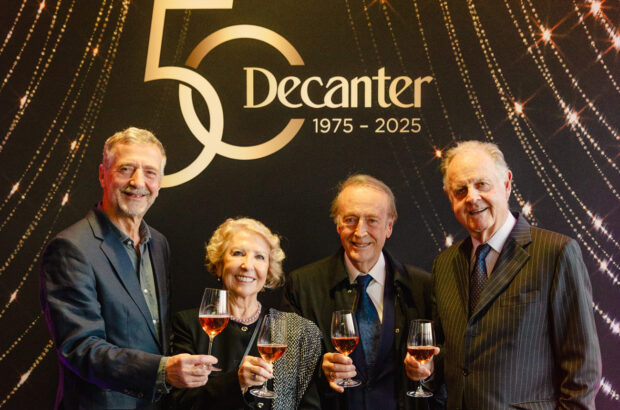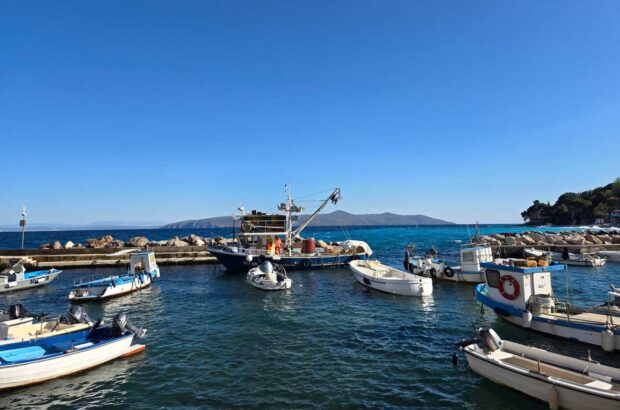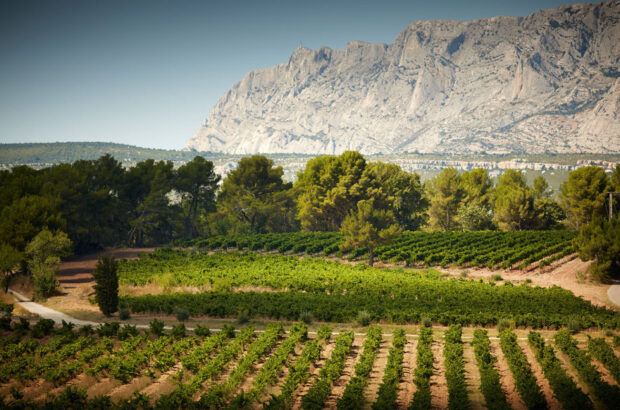The 2015 vintage may hold a tantalising opportunity for those looking to push the quality message of Beaujolais around the region's 10 'crus', writes Jane Anson. But is there a bigger image problem for producers?
Downtown Lyon
It’s not just the Michelin-starred restaurants that make Lyon such a foodie town. There are, admittedly, 14 of them, but the true joy of Lyon is to search out the ever-changing scene of wine bars, brasseries and neighbourhood bistros that give a nod to the city’s heritage while reinventing what it looks like today.
One of the best places to get a feel for this is The Confluence, an urban renewal project led by architects including Herzog & de Meuron that is halfway through an astonishing renovation of a rundown warehouse district set at the confluence of the Saône and Rhone rivers.
These are the great wine rivers that give Lyon its heart, and The Confluence should offer hope to a cluster of wine appellations that sit alongside their banks and are equally looking for a reinvention.
Impossible to drive through this landscape, that spines upwards from the town of Belleville, 50km north of Lyon along the Saône river, without the breath catching in your throat. Brouilly and its Côte, Regnié, Morgon, Chiroubles, Fleurie, Moulin à Vent, Chénas, Juliénas and Saint Amour may not have the dramatic escarpments of Côte Rotie to the south of Lyon, but they reward instead with an immoderate array of granite, silex, limestone, marne, clay and schist soils hidden within gently billowing slopes that glide from one to the other, set by turns towards the morning or evening sun, and everything in between.
‘Crus du Beaujolais’
The exact nature of the soils of these 10 Beaujolais crus – or ‘crus du Beaujolais’ – has finally been subject to detailed geological studies carried between 2010 and 2014. A resulting series of maps was issued last year that shows exactly how much more there is to these soils beyond the ‘granite’ that is most typically assigned to them.
I saw these maps hanging on the walls of every estate that I visited in Fleurie, Brouilly and Moulin à Vent last week. They have become a talisman for the continued drive towards separating the crus from the mother region of Beaujolais. And a way to establish the crus as separate, it is worth adding, from each other.
‘Would anyone speak about Vosne-Romanée as only a cru de Bourgogne?’. Alexandra de Vazeilles at Château des Bachelards in Fleurie asks me several versions of this question over the course of our two days together. ‘Would we ever see Pauillac as simply a cru de Bordeaux? These are separate appellations with their own identities, and we need to do a better job of conveying that to wine lovers’.
De Vazeilles, who prefers to declassify her non-Fleurie or Saint Amour vines into IGP Collines Rhodaniennes rather than label them Beaujolais Villages, is part of a new generation of winemakers determined to do exactly that.
She is fully supportive of the decision taken earlier this year to break away from Beaujolais’ umbrella winemaking union and believes the next step should be the creation of separate wine syndicates (ODGs) to oversee each appellation, as currently there is one single ODG for the 10 Beaujolais Crus.
Chapoutier interest
It is a perfect example of the reflex in Beaujolais to paint itself with a broad brush – and is something that is repeated at subtle levels all over the region. I did a fascinating tasting of the 2014 vintage with director Gregoire Hoppenot of Maison Trenel, the négociant house that was bought a few months ago by Michel Chapoutier.
The bottles in front of us came from eight of the ‘crus’, ranging in taste from a spicy, tannic Morgon to a pure example of the floral sexiness of Fleurie. The Brouilly lacked some finesse, while the Saint Amour was packed with minerality and smokiness – very different, and yet each bottle was rather astonishingly priced the same.
‘That was the policy for many years,’ Hoppenot – who is also new to Trenel, as is winemaker Nicolas Dietrich – said with a barely perceptible shrug before adding perhaps a little undiplomatically, ‘The Chapoutier house doesn’t have the same blind spots because it is not from Beaujolais’.
And there is a palpable feeling that the excellent 2015 vintage is the moment to showcase how the gamay grown in these vineyards is capable of greatness. It should be accepted by now that age, yield control and terroir change everything for this grape. I love the natural acidity of gamay that when taken in hand delivers lift and a sense of unforced pleasure.
Stack that up alongside the fleshy vibrancy of its fruit and it’s easy to see why the best of these wines are just so mouth-wateringly moreish. And yet the message stubbornly refuses to catch on. There was a chorus of approval for the 2009 and 2010 vintages, but things have gone quiet since (even the excellent 2011 didn’t grab the same headlines). Now 2015 holds out a tantalising opportunity.
‘Exceptional concentration, small yields, good alcohol levels, great ageing potential, somewhere between 2005 and 2009 in terms of character,’ is how Hoppenot describes the 2015. And crucially, Chapoutier plans to make the most of its potential. He is planning, among other measures, to buy grapes rather than finished wine from his existing growers, to buy vines himself, and to isolate individual climats to vinify separately.
Chapoutier is at the beginning of a strategy already employed by Burgundy’s Maison Albert Bichot at Domaine de Rochegrès, Louis Jadot at Château des Jacques and the Labruyère family at Domaine Labruyère, all in Moulin à Vent. All have notably increased their focus on vinifiying and bottling individual terroirs – joining small producers such as Richard Rottiers who has been bottling cuvées such as the brilliant Moulin à Vent Dernier Souffle, from a plot just next to the cemetery in Romanèche-Thorins, since 2010.
They are not yet silencing the arguments that continue to rage around the future direction of these Saône vineyards, but they are providing some wonderful-tasting contributions to the debate.







